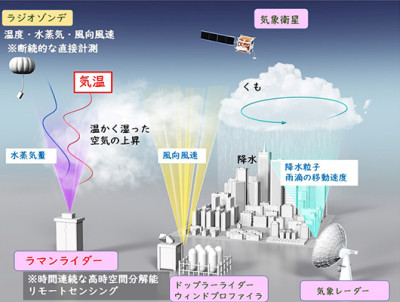2022-08-08 アメリカ・ローレンスリバモア国立研究所(LLNL)
この歴史的快挙から1年を迎え、この記録的実験の科学的成果が、Physical Review Lettersに1本、Physical Review Eに2本の計3本の査読付き論文として掲載されました。
論文では、2021年8月8日の結果と、それに伴う設計、改善、実験測定について詳しく述べています。
昨年8月の実験以来、チームはこの性能を再現し、この新しい体制での実験的感度を理解するために一連の実験を実行している。
これらの実験は、この新しい高感度な実験体制に内在する変動性をテストし理解する機会を提供しました。
再試行は、2021年8月の実験と同じレベルの核融合収量には達していませんが、すべての実験が430~700kJの範囲の収量で統一よりも大きいカプセルゲインを示し、2021年2月の170kJというこれまでの最高収量を大幅に上回りました。これらの実験やその他の実験から得られたデータは、その実験を繰り返し、将来その性能を超えるために、何がうまくいき、どのような変更が必要なのかについて、重要な手がかりを与えてくれるものです。
<関連情報>
- https://www.llnl.gov/news/three-peer-reviewed-papers-highlight-scientific-results-national-ignition-facility-record
- https://journals.aps.org/prl/abstract/10.1103/PhysRevLett.129.075001
- https://journals.aps.org/pre/abstract/10.1103/PhysRevE.106.025202
- https://journals.aps.org/pre/abstract/10.1103/PhysRevE.106.025201
慣性核融合実験におけるローソン基準による着火の超過について Lawson Criterion for Ignition Exceeded in an Inertial Fusion Experiment
H. Abu-Shawareb et al. (Indirect Drive ICF Collaboration)
Physical Review Letters Published:8 August 2022
DOI:https://doi.org/10.1103/PhysRevLett.129.075001
ABSTRACT
For more than half a century, researchers around the world have been engaged in attempts to achieve fusion ignition as a proof of principle of various fusion concepts. Following the Lawson criterion, an ignited plasma is one where the fusion heating power is high enough to overcome all the physical processes that cool the fusion plasma, creating a positive thermodynamic feedback loop with rapidly increasing temperature. In inertially confined fusion, ignition is a state where the fusion plasma can begin “burn propagation” into surrounding cold fuel, enabling the possibility of high energy gain. While “scientific breakeven” (i.e., unity target gain) has not yet been achieved (here target gain is 0.72, 1.37 MJ of fusion for 1.92 MJ of laser energy), this Letter reports the first controlled fusion experiment, using laser indirect drive, on the National Ignition Facility to produce capsule gain (here 5.8) and reach ignition by nine different formulations of the Lawson criterion.
国立点火施設における実験的達成と点火のサイン Experimental achievement and signatures of ignition at the National Ignition Facility
A. B. Zylstra et al.
Physical Review E Published: 8 August 2022
DOI:https://doi.org/10.1103/PhysRevE.106.025202
ABSTRACT
An inertial fusion implosion on the National Ignition Facility, conducted on August 8, 2021 (N210808), recently produced more than a megajoule of fusion yield and passed Lawson’s criterion for ignition [Phys. Rev. Lett. 129, 075001 (2022)]. We describe the experimental improvements that enabled N210808 and present the first experimental measurements from an igniting plasma in the laboratory. Ignition metrics like the product of hot-spot energy and pressure squared, in the absence of self-heating, increased by ∼35%, leading to record values and an enhancement from previous experiments in the hot-spot energy (∼3×), pressure (∼2×), and mass (∼2×). These results are consistent with self-heating dominating other power balance terms. The burn rate increases by an order of magnitude after peak compression, and the hot-spot conditions show clear evidence for burn propagation into the dense fuel surrounding the hot spot. These novel dynamics and thermodynamic properties have never been observed on prior inertial fusion experiments.
ローソン基準点火を超える慣性核融合実験の設計 Design of an inertial fusion experiment exceeding the Lawson criterion for ignition
A. L. Kritcher et al.
Physical Review E Published 8 August 2022
DOI:https://doi.org/10.1103/PhysRevE.106.025201
ABSTRACT
We present the design of the first igniting fusion plasma in the laboratory by Lawson’s criterion that produced 1.37 MJ of fusion energy, Hybrid-E experiment N210808 (August 8, 2021) [Phys. Rev. Lett. 129, 075001 (2022)]. This design uses the indirect drive inertial confinement fusion approach to heat and compress a central “hot spot” of deuterium-tritium (DT) fuel using a surrounding dense DT fuel piston. Ignition occurs when the heating from absorption of α particles created in the fusion process overcomes the loss mechanisms in the system for a duration of time. This letter describes key design changes which enabled a ∼3–6× increase in an ignition figure of merit (generalized Lawson criterion) [Phys. Plasmas 28, 022704 (2021), Phys. Plasmas 25, 122704 (2018)]) and an eightfold increase in fusion energy output compared to predecessor experiments. We present simulations of the hot-spot conditions for experiment N210808 that show fundamentally different behavior compared to predecessor experiments and simulated metrics that are consistent with N210808 reaching for the first time in the laboratory “ignition.”



